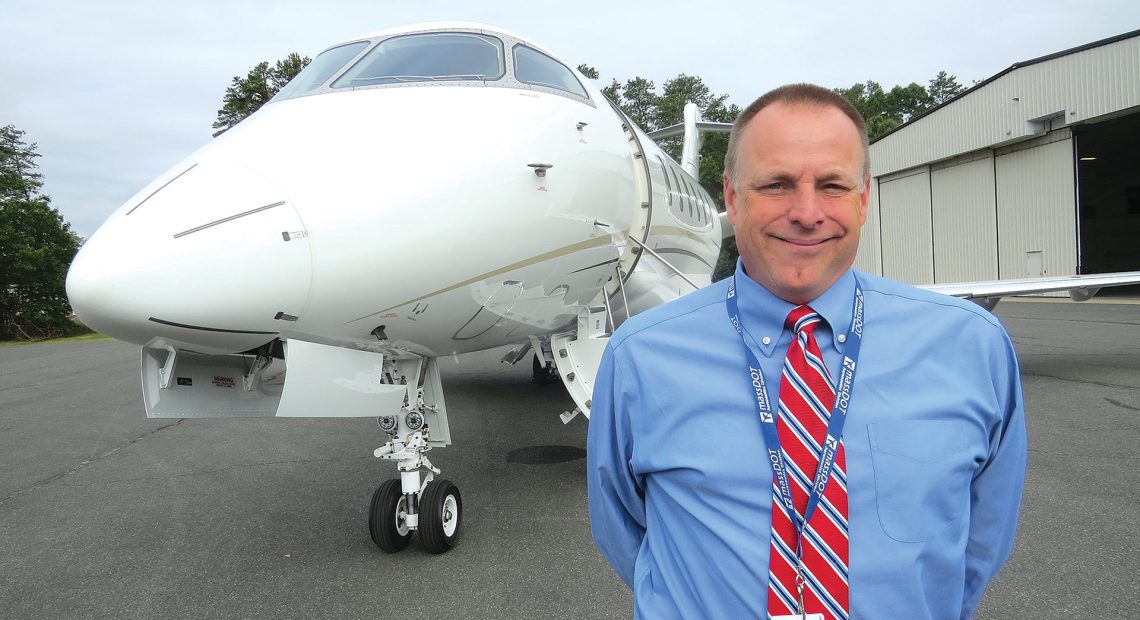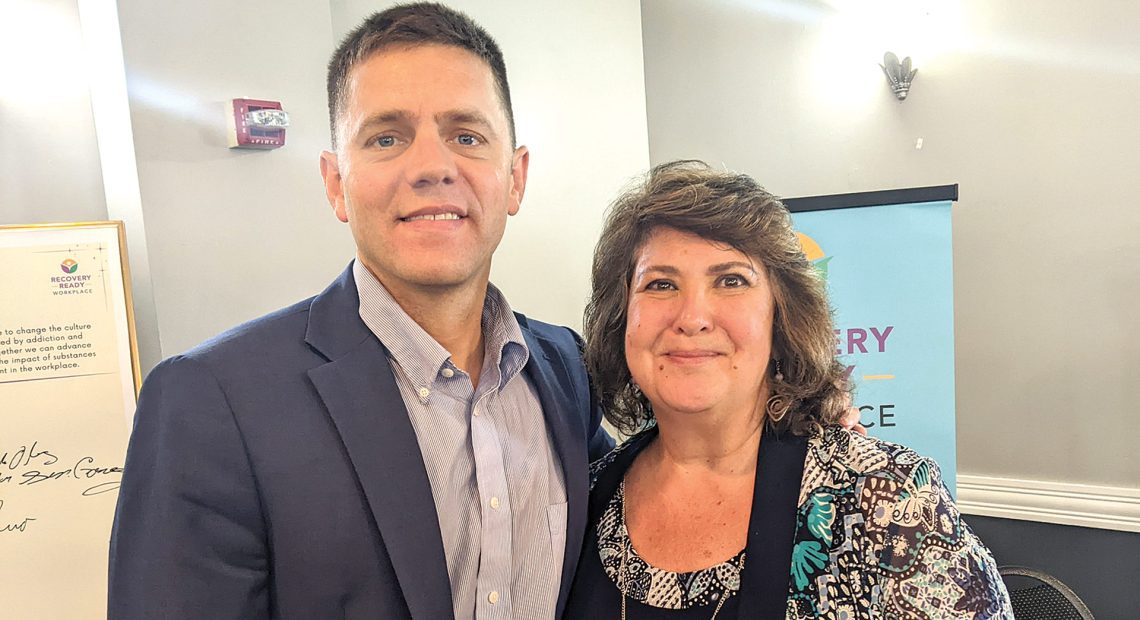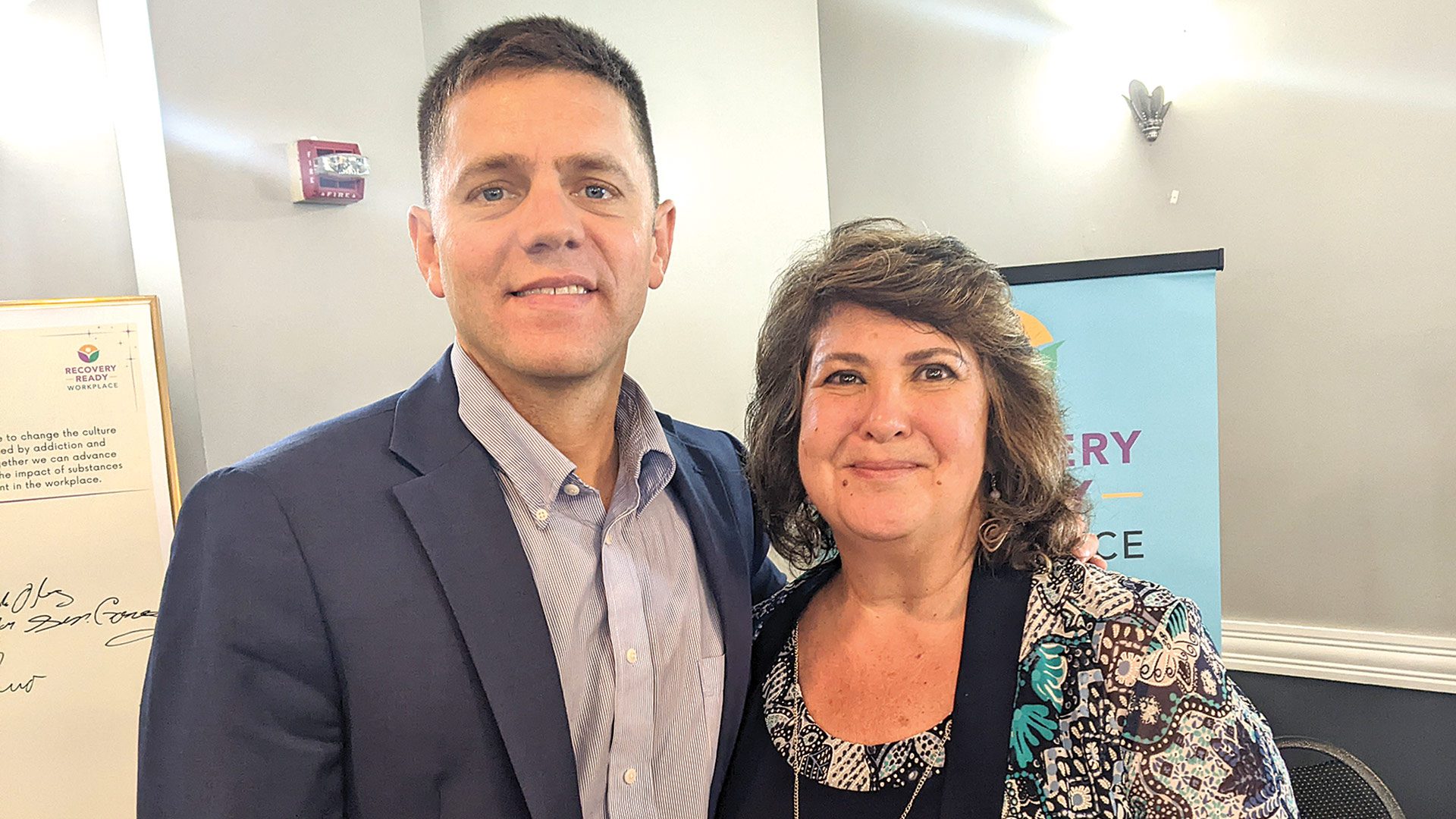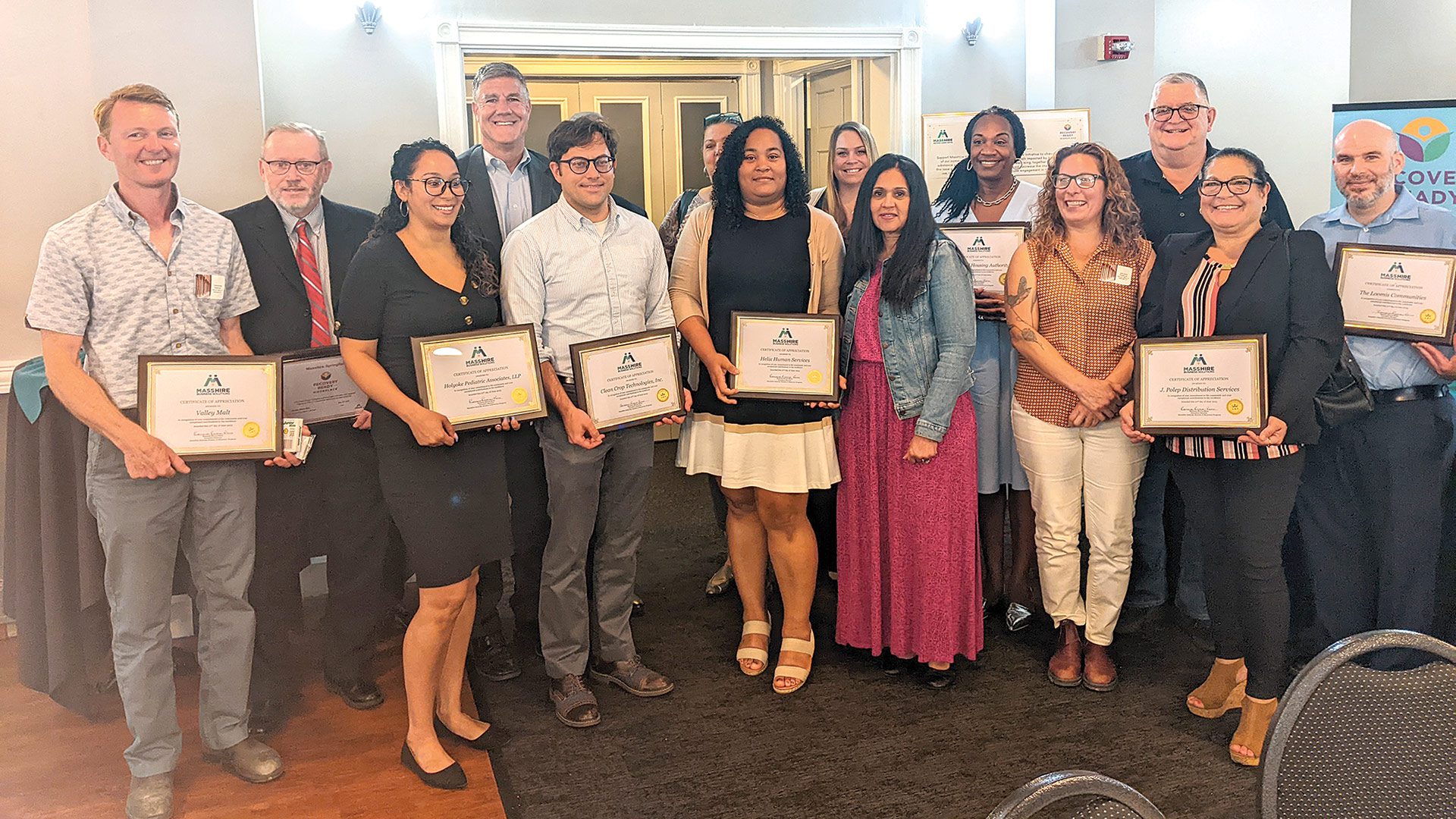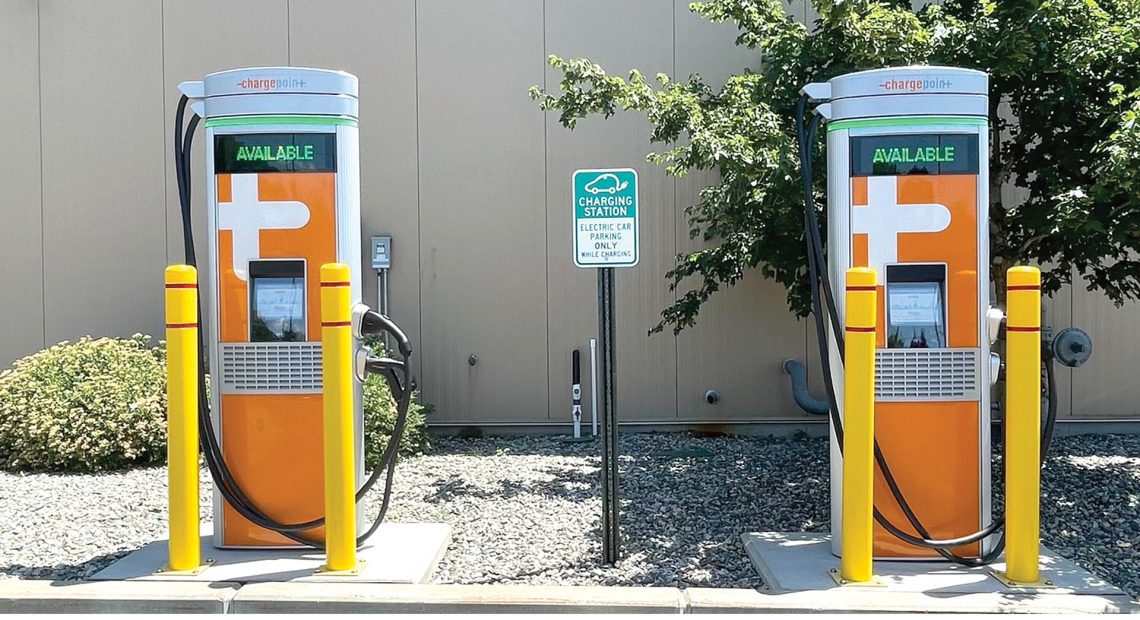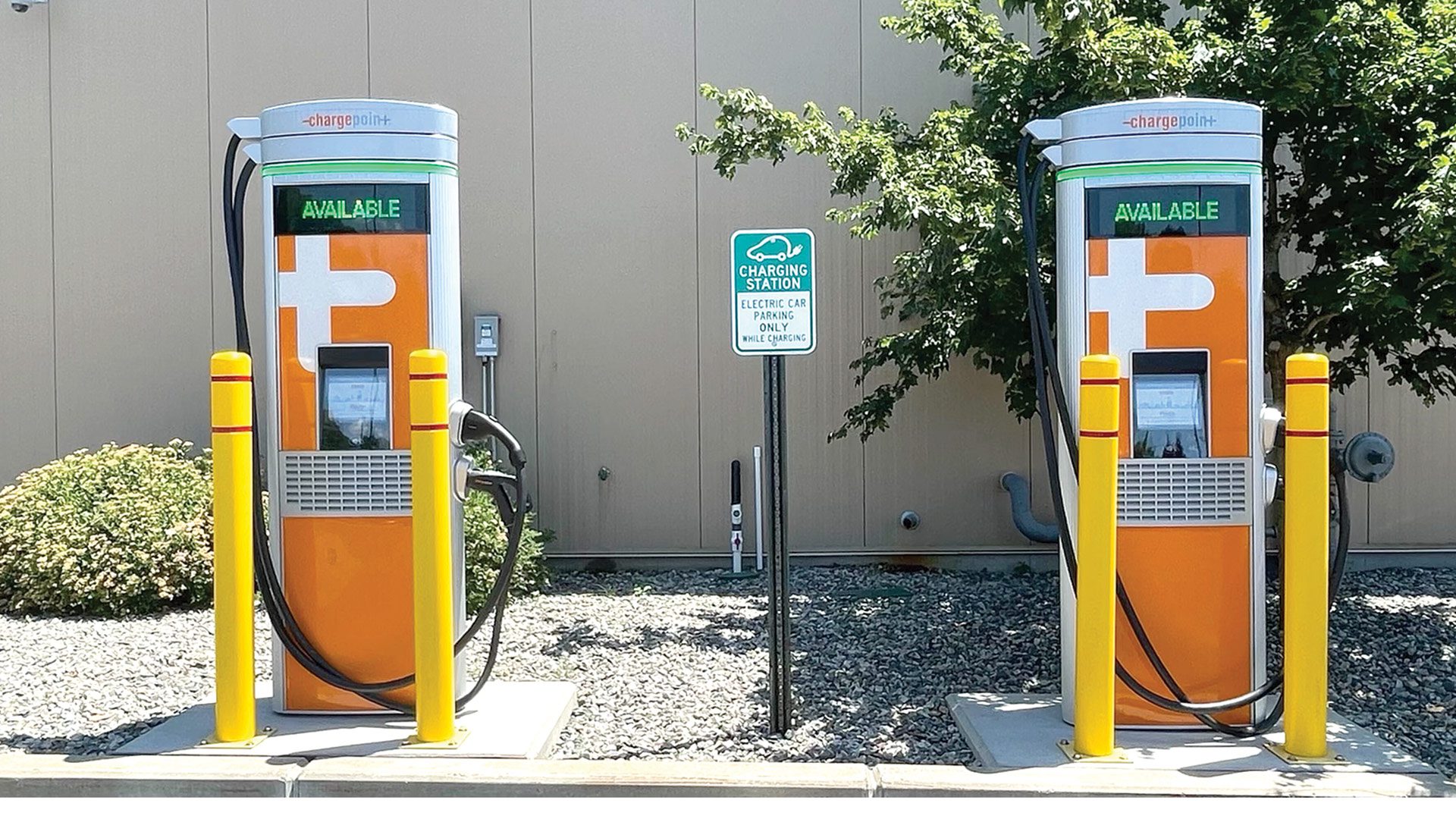Community Spotlight

Chris Willenborg stands in front of one of the private jets based at Barnes Westfield Regional Airport, one of the many assets contributing to economic-development efforts in the city.
The F-35 stealth fighter is nicknamed ‘Lightning,’ and it is certainly expected to provide a powerful surge in Westfield.
The Pentagon announced in April that 18 F-35A fighters will be based at Westfield Barnes Regional Airport with the Air National Guard’s 104th Fighter Wing, replacing the F-15s that have been flying over the city — and on missions around the world — since 2007.
Rick Sullivan, president and CEO of the Western Massachusetts Economic Development Council — but also a former mayor of this city for a dozen years and currently a city councilor — said the F-35s will become an obvious point of pride for the community and the region, but there is an economic-development component to this decision as well.
Indeed, the move will stabilize and secure the long-term future of the 104th, which brings more than 1,000 jobs and millions of dollars in direct support to the local economy each year.
“The F-35s are obviously hugely important, not only to the operation of Westfield Barnes Regional Airport, but to the 104th, which is a significant employer in the region, and a significant business,” Sullivan explained. “Aside from being an absolute point of pride for the city and the region, it’s an important economic development as well.”
Chris Willenborg, manager of the airport, agreed.
“The F-35s mean a lot to the future of the 104th’s presence at the airport,” he told BusinessWest. “This decision really solidifies the 104th Fighter Wing having a mission at Barnes Regional Airport for the next 50 or 60 years; having a new fighter based here will be a significant asset for the airport moving forward.”
Meanwhile, the F-35s provide a powerful, up-close representation of an important part of the city’s economy: its precision-manufacturing shops, large and small, many of which provide parts to the defense and aerospace industries and planes like the F-35A.
Indeed, Sullivan, in talking about the presence of the precision-manufacturing sector and its importance to the region, has often noted that, when military or commercial planes fly over the region, residents can point to them and note that components of those aircraft are made in the 413.
And especially in Westfield, which boasts companies such as Advance Manufacturing, Boulevard Machine and Gear, and Peerless Precision, all of which have a number of customers in the aviation, defense, and aerospace sectors.
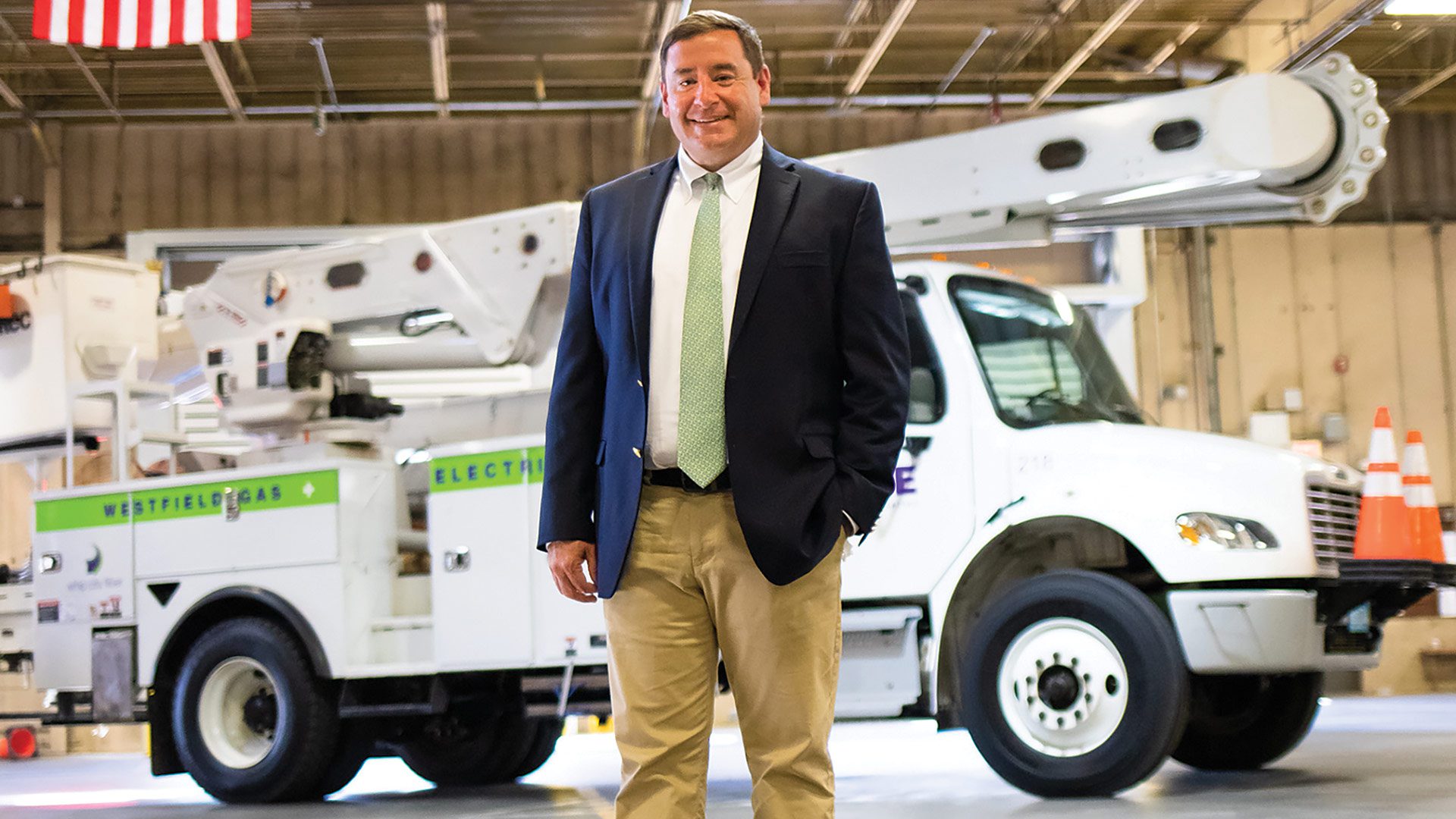
Tom Flaherty says Whip City Fiber has become a $30-million-a-year business.
Kristin Carlson, president of Peerless, told BusinessWest that, after a lull toward the middle of the pandemic, business is picking up for Peerless and other precision manufacturers, who say their biggest challenge remains finding enough talented workers, especially as members of the Baby Boom generation retire in ever-larger numbers and the numbers of young people looking to get into this field remains … well, underwhelming.
“It’s still very much an employees’ market,” she said, adding that firms in this city and neighboring communities are competing tooth and nail for a very limited supply of qualified help, which is driving wages and benefits skyward and making it harder for smaller shops to compete against the larger national and international players.
While precision manufacturing remains a large and stable employer, the city’s economy is strong and diverse, said Mayor Michael McCabe, the former police captain who sought and won the corner office in 2021 and will seek a second two-year term this fall.
He noted the strong presence of manufacturing and distribution facilities, many of them located at or near the airport, as a well as strong retail (Walmart, Home Depot, and many others have locations in the city) and hospitality sectors, and major employers including Baystate Noble Hospital and Westfield State University.
It could also become home to a sprawling, $2.7 billion hyperscale data center complex planned for the city’s north side. That project and an accompanying tax-incentive financing plan have been approved by city officials, and the developers are awaiting word from the state on economic incentives it will provide to support the massive undertaking.
McCabe also cited a changing, rebounding downtown, one that will never again be the retail hub that is was decades ago, but is evolving into a collection of diverse shops and intriguing new developments, such as the housing complex taking shape in the former Lambson’s furniture store building on Elm Street.
For this, the latest installment of its Community Spotlight series, BusinessWest turns its focus on Westfield, where things are looking up — and so are people, especially when the F-35s are flying overhead, as they did at the recent airshow at Barnes and will do for perhaps the next 30 or 40 years.
Ready for Takeoff
McCabe said Westfield is a city that has long boasted a number of enviable assets when it comes to business and economic development. And it has taken full advantage of those assets.
That impressive list includes developable land, a commodity lacking in many area communities, especially in its North Side, which, as noted, has become home to a number of manufacturing and distribution facilities, the latter drawn by not only land but a turnpike exit, easy access to other highways, and rail service.
The list of assets also includes the university, the airport, and a municipal utility, Westfield Gas & Electric, which, through its comparatively low electric rates and expanding fiber-optic network, has become a key contributor to economic development in the city (more on that later).
As for the airport, it has long been a somewhat hidden gem, but it continues to emerge as a force in the local economy as home to not only the 104th, but also companies like Gulfstream Aerospace, where private jets are serviced, and also as a home base for a handful of jets and dozens of other planes.
“Westfield is at the crossroads of the interstates, I-90 and I-91, there’s rail access … and coupled with that is an industry-welcoming community.”
This will go down as a big year for the airport, which has thrust itself into the limelight in a number of ways.
For starters, it is celebrating its 100th birthday, Willenborg said, adding that this comes on top of the announcement of the F-35s, which brought press coverage locally, regionally, and nationally. There was also the recent Westfield International Air Show, which featured a wide range of aircraft, including the F-35A, and brought more than 100,000 people to Barnes. And just a few weeks ago, the Commemorative Air Force, a nonprofit group based in Texas, brought several vintage World War II aircraft — and thousands of spectators — to the airport.
On top of all that, Barnes is enjoying what could be called a building boom, he said, noting that there are four new hangars in various stages of construction, investments totaling between $8 million and $10 million, as well as two taxiway projects on the docket, one to start this month and the other set for next year.
Overall, the airport, which sees 50,000 takeoffs and landings each year, contributes roughly $1.2 million of direct revenue to the city, and its overall economic impact, according to a 2019 statewide study, is roughly 2,100 direct and indirect jobs and economic output of $236 million, numbers that take into account the 104th.
“The airport is definitely a major economic engine and employer here in Western Massachusetts,” Willenborg said, adding that the arrival of the F-35s is only expected to increase that impact.
The Jet Set
Also making a considerable impact is the city’s utility. General Manager Tom Flaherty said Westfield G&E’s rates are considerably lower than investor-owned utilities such as Eversource and National Grid, a competitive advantage that, when coupled with those assets listed above, gives the city a leg up when it comes to landing large manufacturing and distribution facilities, as well as the planned data-center campus.
One of the latest examples of the saleability of this package of assets is the arrival of James Hardie Building Products, which plans to open a construction siding factory in the former Old Colony Envelope plant in the city’s north side.
When it opens, the James Hardie plant will become the G&E’s largest natural-gas customer and one of its 10 largest electric customers, said Flaherty, adding that utility rates certainly played a role in the company’s decision to come to Westfield.
“It was a solid a mix of things — Westfield is at the crossroads of the interstates, I-90 and I-91, there’s rail access … and coupled with that is an industry-welcoming community,” he explained. “And when it narrows down to utility cost, and people are looking at cost and system reliability and the capability to meet that gas demand, Westfield has all that.”
Elaborating, he said Westfield has its own natural-gas spur that comes off the Tennessee Gas pipeline, which the G&E wholly owns, giving it — and the city — a huge advantage over communities such as Holyoke and utilities currently enforcing moratoriums on additional natural-gas service.
Another advantage — again, for both the city and its utility — is the G&E’s expanding fiber-optic business, Whip City Fiber. Launched in 2013 to provide fiber-optic service to residents and businesses in Westfield, the endeavor has become a $30 million-a-year business whereby the G&E has built out and now manages fiber-optic networks in 20 area communities — from Blandford to Goshen to Colrain — with more in the pipeline.
These include West Springfield and Southwick, said Flaherty, adding that more cities and towns in this region and beyond will be joining that list in the years to come.
“In the beginning, the broad goal was to bring an additional service to the residents and business of Westfield and, hopefully, break even,” he told BusinessWest, adding that, today, through its continued expansion in the city and to other communities, Whip City Fiber generates roughly $3.5 million in net income for the utility, money that is currently poured into expansion of the fiber-optic network to different parts of the Westfield.
Westfield at a glance
Year Incorporated: 1669
Population: 40.834
Area: 47.4 square miles
County: Hampden
Residential Tax Rate: $16.98
Commercial Tax Rate: $33.52
Median Household Income: $45,240
Median Family Income: $55,327
Type of Government: Mayor, City Council
Largest Employers: Westfield State University, Baystate Noble Hospital, Mestek Inc., Savage Arms Inc., Advance Manufacturing Co.
* Latest information available
When the entirety of Westfield is covered by the service, that revenue can be put toward other initiatives, such as the utility board’s recent vote to make additional payments in lieu of taxes to the city with the intention that they be used to upgrade athletic fields in the city.
“We’re looking to partner with the city to turf up to six fields and pay the bond for that, up to $1 million a year,” he said, adding that many of the city’s athletic fields are in need of upgrading or expansion. “That’s a project where we can give back to the community as we continue to bring in revenue from communities outside of Westfield.”
Soar Subject
While the F-35s are expected to provide a boost in civic pride and some stability for the 104th and the local economy, the precision manufacturers in the area are hoping they do something else — generate some interest in the field.
Such forms of inspiration are still very much needed, said Carlson, adding that, despite attractive pay rates, good benefits, and even growing flexibility in the workplace, it remains a struggle to find and retain talent, a challenge that is testing many of the shops in the city, including hers.
Hiring was an issue before COVID, noted Carlson, who was honored by BusinessWest with its Difference Makers award in 2021, primarily for her tireless work to educate young people about this sector and hopefully draw more of them into it, adding that the pandemic and its many side effects, including generous unemployment benefits, only exacerbated the problem.
“Whoever thought it could get harder for manufacturers to find good people?” she asked with a laugh. “It’s always been a struggle for our industry, and post-pandemic, it’s been even worse; somehow, I was able to fill open positions inside of a month this year, and I’m not really sure how that happened.
“There are a lot of us in Westfield who constantly have job openings, and we’re trying to fill them, as is the case with every manufacturer in the state and the country, for that matter,” she went on. “The problem is the same that it’s always been — we have a limited skilled labor force that we can pull from, and we’re all competing for the same ones.”
Elaborating, she said Westfield Technical Academy graduates 16 to 18 students a year from its manufacturing department, and there are roughly 30 shops in Westfield alone competing for those students, many of whom are brought into shops as part of a co-op program while they’re seniors, with the goal of seeing them stay with the firm in question.
Meanwhile, the pandemic had the additional effect of pushing many Baby Boomers over the retirement cliff, Carlson said, adding that this drain of experienced talent further tested shops large and small, including Peerless, which saw two long-time employees retire over the past year.
Still, despite these challenges, most shops, including Peerless, are thriving, she said.
“We had a slump last year, but we’re coming out of it, and we’re at almost 90-degree climb now, so it’s good,” she said, using an aviation-industry term to get her point across. “We’re seeing a lot of large customers who had really slowed down during the pandemic coming back in full force, and we’re seeing customers come back that we hadn’t done business with in three years because of the pandemic.”
Uplifting Thoughts
Speaking of 90-degree climbs … the F-35s are not expected to arrive until 2026. But already, expectations, and the overall outlook for the city, are sky high.
After years of effort and lobbying on the part of city, state, and national officials, the latest-generation F-35s will be coming to Barnes, providing — as Sullivan, McCabe, Willenborg, and others told BusinessWest — both a point of pride and an economic boost for the city and region.
It’s a lightning strike, to be sure, and one with a powerful jolt.



